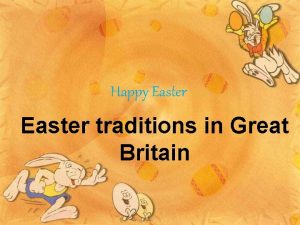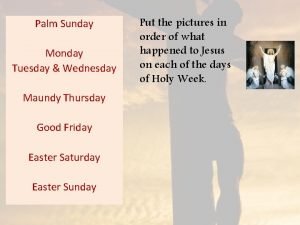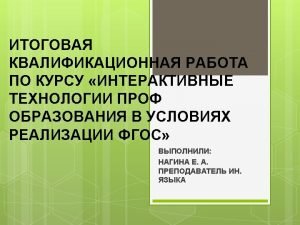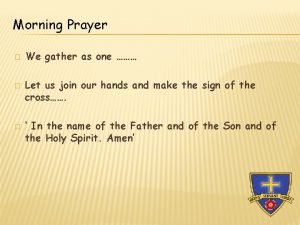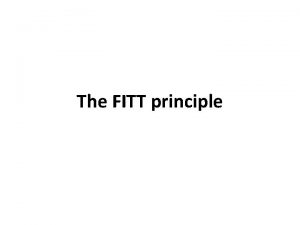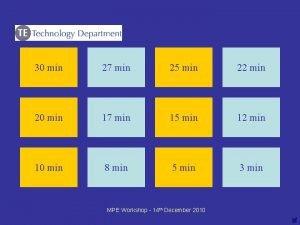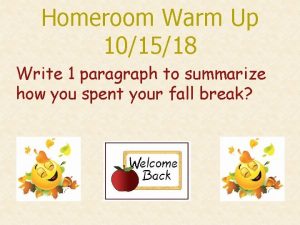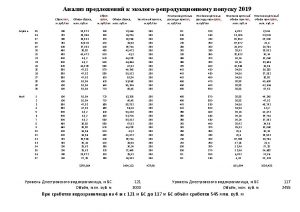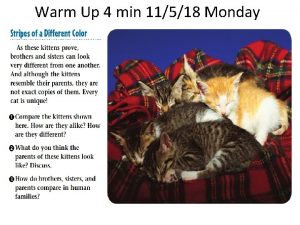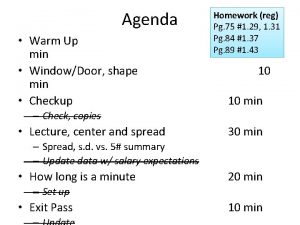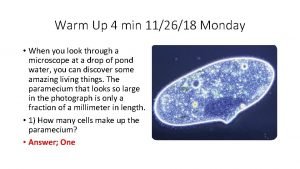Warm Up 4 min 101518 Monday Warm Up










- Slides: 10

Warm Up 4 min 10/15/18 Monday

Warm Up answer • 1) The porcupine’s body size and shape are similar to other large rodents, such as skunks and groundhogs. Few other animals, however, have quills like the porcupine’s quills. • 2 By using an animal’s scientific name, scientists can identify an animal precisely and can better communicate with colleagues. • 3 The photo shows several plants or parts of plants, including the flowers that the porcupine is eating, the plants growing behind it, and a decaying log.

Today Agenda • 1) Warm Up 4 minutes • 2) Lesson Vocabulary 5 min • 3) Lesson Outline 10 min • 4) Video • 5) Plicker • 6) Homework Packet (Key Concept Builder- Last week sub packet) Reminder; STEM FAIR STEP 2 BACKGROUND RESEARCH DUE IS 10/19/18 (FRIDAY) OPEN NOTEBOOK QUIZ (ON CELL 10/19/18)

Lesson Vocabulary (Use definition to answer worksheet questions) 1. autotroph organism that converts light energy into usable energy (Producer) 2. binomial nomenclature naming system that gives each living thing a twoword scientific name 3. habitat specific environment where an organism lives (iguana lives in tropical rain forests and spend a lot of time in the trees 4. heterotroph organism that obtains energy from other organisms ( Animals) 5. Dichotomous key: aid to identification 6. macromolecule substance in a cell that forms from joining many small molecules together (carbohydrates. lipids. proteins. nucleic acids. ) 7. taxon group of organisms 8. unique without an equal, distinctive

Lesson Outline for Teaching Lesson 1: Classifying Living Things A. What are living things? 1. All living things have some characteristics in common. a. They are made of cells. b. They are organized into different structures. c. They grow and develop. d. They respond to their environment. e. They reproduce, or form new organisms. f. They use energy. 2. Macromolecules in cells are organized into different structures that help cells function. 3. The four types of macromolecules in cells are nucleic acids, lipids, proteins, and carbohydrates. 4. Unicellular organisms are made up of only one cell.

Lesson Outline for Teaching Lesson 1: Classifying Living Things 5. Multicellular organisms have different types of cells that carry out specialized functions. 6. The different levels of organization in multicellular organisms are: cell, tissue, organ, and organ system. 7. Living things grow, or increase in size, during their lifetimes. 8. Adult organisms form new organisms by reproducing asexually or sexually. a. Bacteria and other unicellular organisms reproduce asexually when one cell divides and forms two new organisms. b. Sexual reproduction occurs when the reproductive cells of one or two parent organisms join and form a new organism. c. Humans and other multicellular organisms reproduce sexually. 9. Autotrophs are organisms that convert light energy into usable energy. a. Many autotrophs use energy from light to convert carbon dioxide and water into carbohydrates, or sugars. b. Organisms that grow on energy released by chemical reactions of inorganic substances such as sulfur and ammonia are called chemoautotrophs. 10. Organisms that obtain energy from other organisms are called heterotrophs; they eat autotrophs or other heterotrophs. 11. Organisms respond adapt to changes in their external environments.

Lesson Outline for Teaching Lesson 1: Classifying Living Things B. What do living things need? 1. All living things need energy, food, water, and a place to live. 2. An organism’s habitat is the specific environment where it lives. 3. Food provides organisms with energy, and water is essential for survival. 4. The type of food an organism eats depends its habitat. C. How are living things classified? 1. Classifying living things makes it easier to organize organisms and to see how they are similar and different. 2. The naming system that gives each living thing a two-word scientific name is called binomial nomenclature and was created by Carolus Linneaus.

Lesson Outline for Teaching Lesson 1: Classifying Living Things 3. Taxonomy is the branch of science that classifies living things. 4. A(n) taxon is a group of organisms. 5. All living things on Earth are divided into three groups called domains. a. Domains are divided into kingdoms and then phyla, classes, orders, families, genera, and species. b. A(n) species is made of all organisms that can mate with one another and produce offspring that can reproduce. 6. Scientists today group organisms based on similarities such as how organisms reproduce, how they process energy, and the types of genes they have. 7. A(n) dichotomous key is a tool used to identify an organism based on its characteristics.

Video • https: //www. youtube. com/watch? v=vqxom. JIBGc. Y

Plicker • 8 questions.

